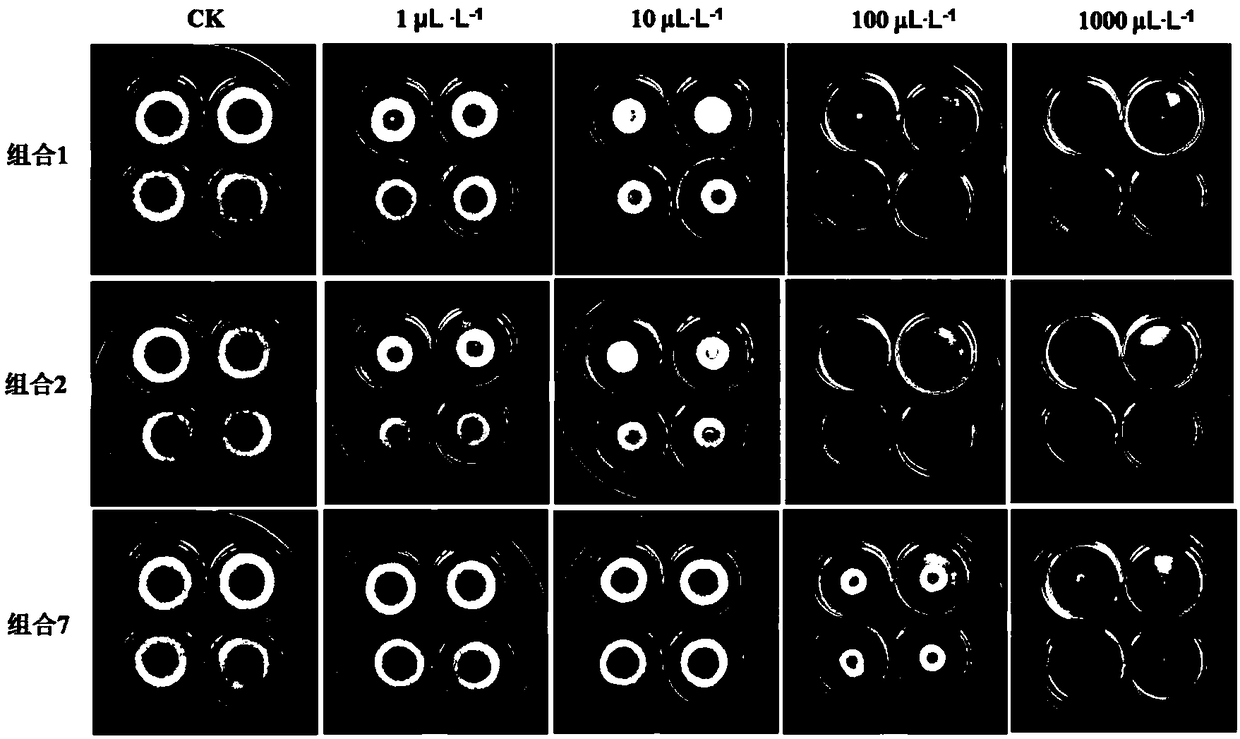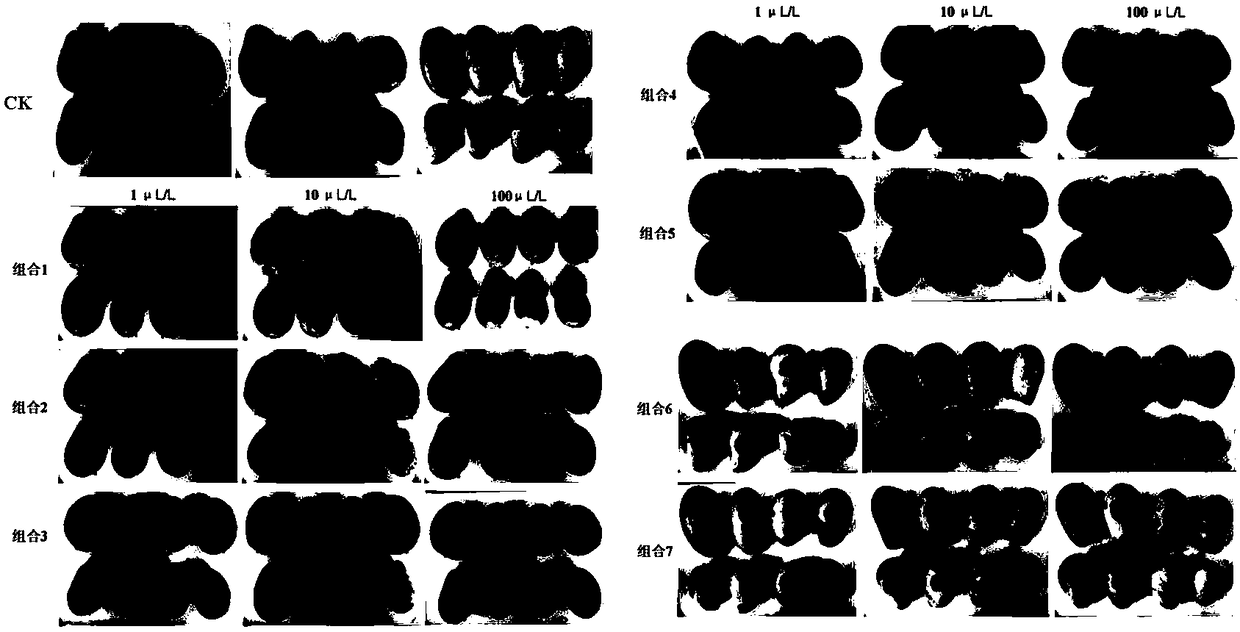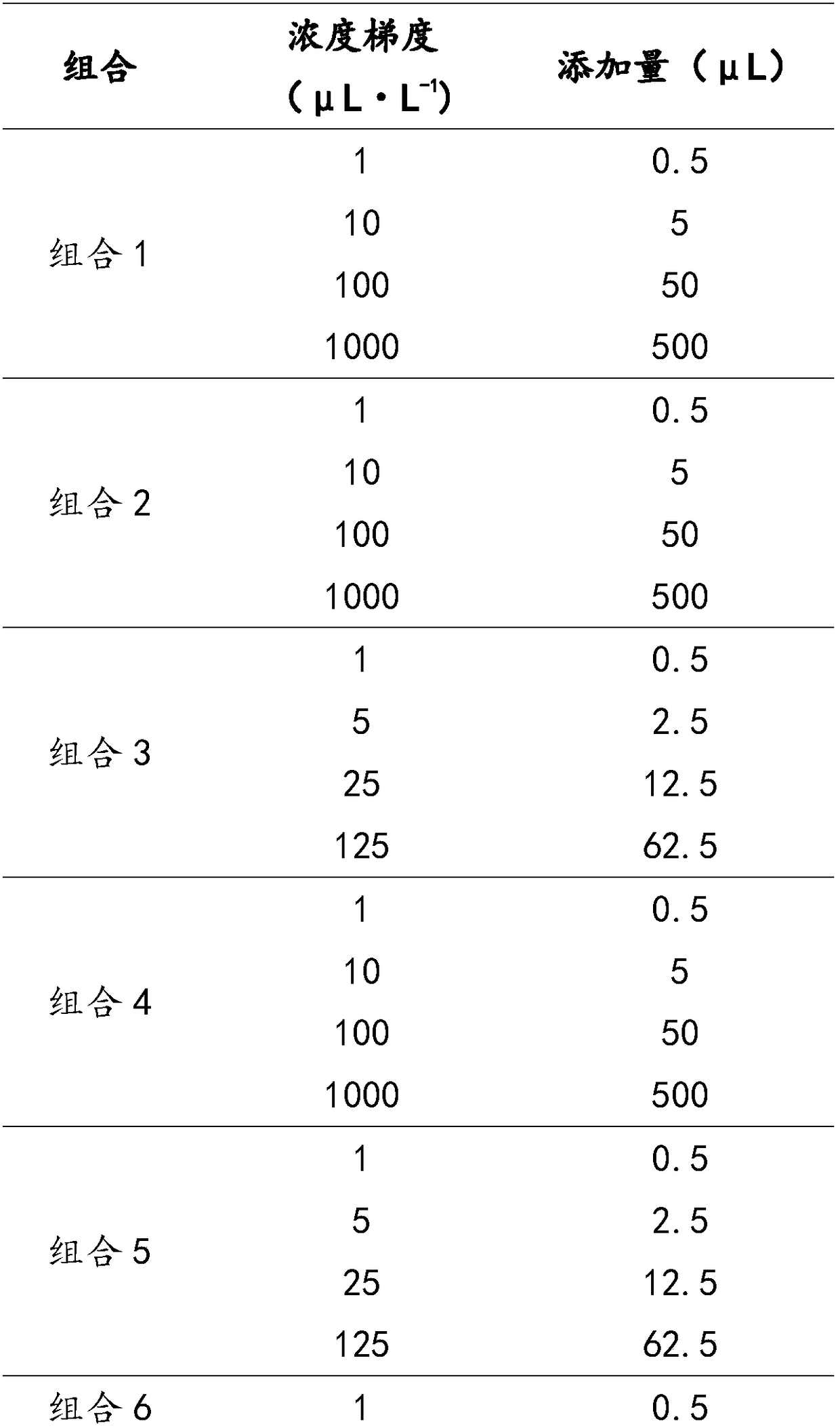Combined volatile compound and application thereof in preventing and treating anthracnose of postharvest mangos
A technology of volatile compounds and anthracnose, which is applied in the field of combined volatile compounds and its application in the prevention and treatment of mango postharvest anthracnose, can solve the problems of pesticide residues, human health hazards, easy to produce drug resistance, etc., and achieve good biological control value, good antifungal activity
- Summary
- Abstract
- Description
- Claims
- Application Information
AI Technical Summary
Problems solved by technology
Method used
Image
Examples
Embodiment 1
[0022] This example is used to illustrate the inhibitory effect of different combinations of volatile substances on the mycelium of anthracnose.
[0023] The method for determining the inhibitory effect of different combinations of volatile substances on the mycelium of anthracnose: Place 4 small petri dishes (diameter 6cm, height 1.5) on the bottom of a large petri dish with a diameter of 15cm and a height of 3cm (total volume is about 500mL) cm), and place a small container with a capacity of 1 mL in the center of the large petri dish, and place a 15mm×15mm square filter paper inside the small container. 4 small petri dishes contain about 5 mL of PDA medium, and inoculate the anthracnose mycelium block with a diameter of 6mm in the center of the petri dish, and then add the combined volatile substances corresponding to the concentration and volume content to the small container in the center of the large petri dish. The combined concentration setting and the amount to be added ...
Embodiment 2
[0032] This example is used to illustrate the inhibitory effects of different combinations of volatile substances on the germination of anthracnose conidia.
[0033] The method of determining the inhibitory effect of different combinations of volatile substances on the germination of anthracis spores: Place 4 small petri dishes (diameter 6cm, diameter 6cm, diameter 6cm, 1.5cm high), and place a small container with a capacity of 1 mL in the center of the large petri dish, and place a 15mm×15mm square filter paper inside the small container. 4 small petri dishes hold about 5mL PDA medium, and add 20μL 5×10 to PDA medium 5 Spore suspension per mL, spread it evenly and blow dry the water. Then add the combined volatile substances corresponding to the concentration and volume content to the small container in the center of the large petri dish, and immediately seal the large petri dish with a parafilm to prevent leakage of the volatile substances. Set 3 replicates for each concentra...
Embodiment 3
[0038] This example is used to illustrate the inhibitory effects of different combinations of volatile substances on mango anthracnose lesions.
[0039] Determination of the inhibitory effects of different combinations of volatile substances on anthracnose lesions on mangoes: Put 10 Tainong No. 1 small mangoes in a glassware (4L), stab and inoculate anthracnose conidia suspension, concentration 1×10 6 Pcs / mL, each mango inoculates 1 point, each point is inoculated with 10μL of spore suspension, 24h after inoculation, the concentration of each combination is 1μL·L -1 , 10μL·L -1 And 100μL·L -1 Fumigation treatment under the condition of concentration, 3 repetitions for each concentration, namely 3 glassware, after 48 hours of fumigation, take the mango out and put it into a cardboard box padded with wet paper. Observe the development of anthracnose lesions every day. It is about 8th from the inoculation. Observe the results every day, count the incidence rate, measure the diameter ...
PUM
 Login to View More
Login to View More Abstract
Description
Claims
Application Information
 Login to View More
Login to View More - R&D
- Intellectual Property
- Life Sciences
- Materials
- Tech Scout
- Unparalleled Data Quality
- Higher Quality Content
- 60% Fewer Hallucinations
Browse by: Latest US Patents, China's latest patents, Technical Efficacy Thesaurus, Application Domain, Technology Topic, Popular Technical Reports.
© 2025 PatSnap. All rights reserved.Legal|Privacy policy|Modern Slavery Act Transparency Statement|Sitemap|About US| Contact US: help@patsnap.com



